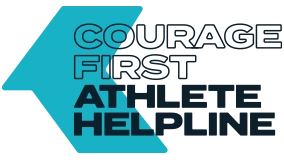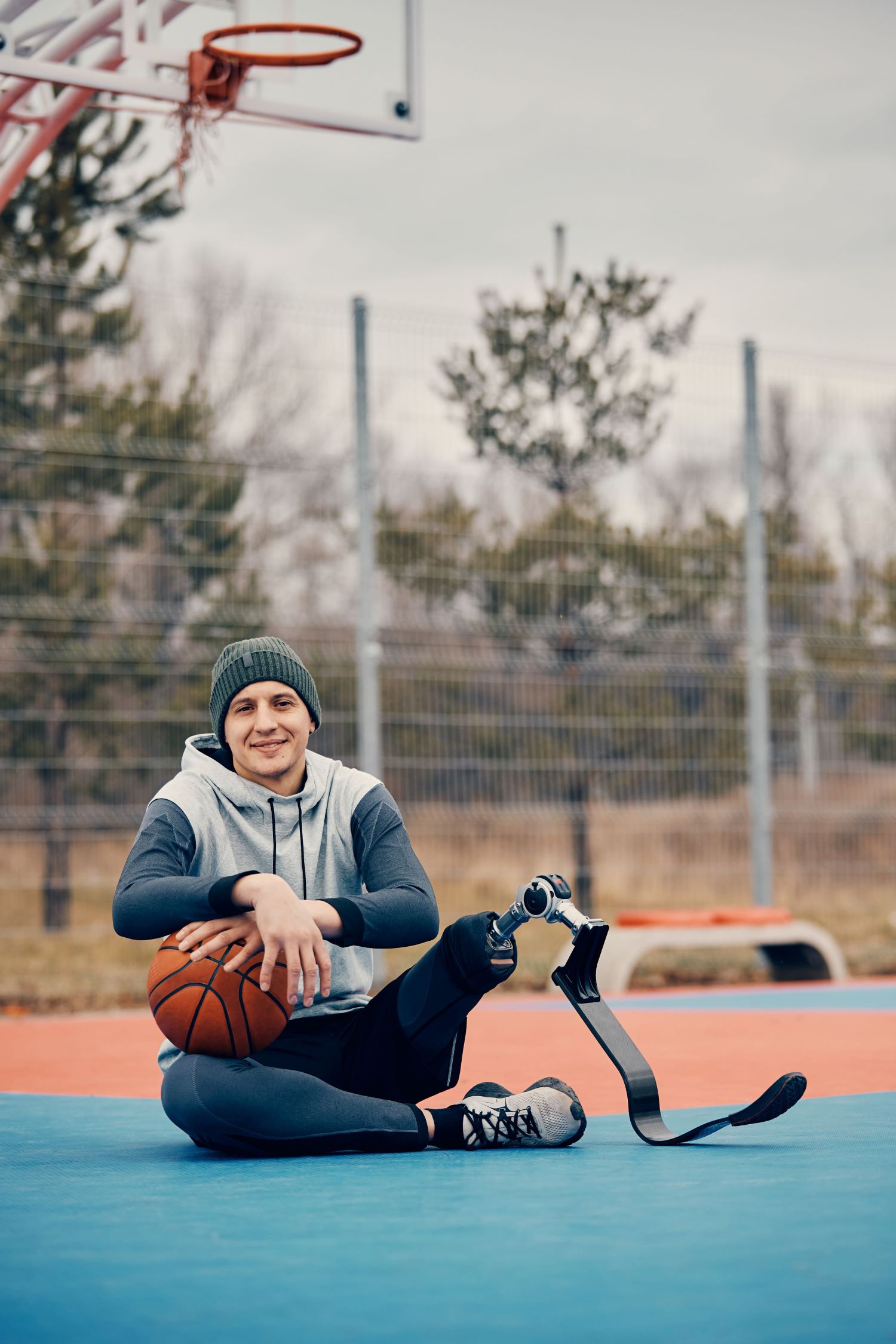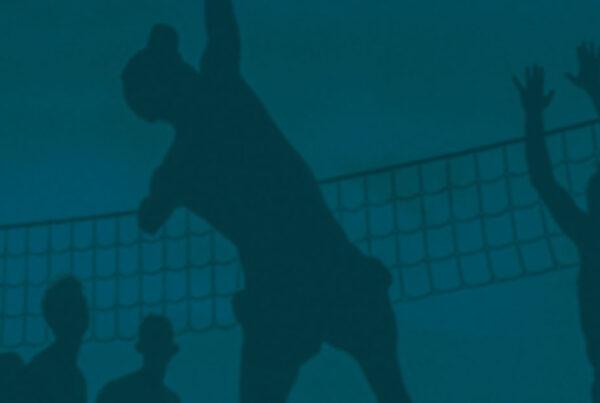Guest Writer: Doug Fierberg
The Courage First Athlete Helpline (“Courage First”) is the first of its kind to provide crisis line services to help athletes on a wide range of issues unique to sports, athletic training and competition. With Courage First, athletes have direct, immediate access to trained mental health professionals. Courage First also endeavors to inform the community of athletes with basic information about legal issues that are often attendant in matters that involve their health, safety, and efforts to protect themselves from abuse.
Of course, the general legal information provided is not intended to supplant direct legal advice that athletes are encouraged to seek regarding their specific circumstances. However, an athlete-empowered with basic legal information – is more likely to perform better when it comes to protecting themselves and seeking out resources to help those efforts.
To that end, Courage First provides the following overview of SafeSport:
Background
If you’ve experienced abuse or misconduct by a coach, trainer, or other adult in connection with your participation in sports, it’s important to understand your rights and options under the Protecting Young Victims from Sexual Abuse and Safe Sport Authorization Act of 2017 (SafeSport Act). Congress passed the SafeSport Act in response to survivors who spoke out about horrifying abuse committed by Larry Nasser, and the institutional failures that facilitated the continuation of that abuse for decades. The SafeSport Act creates a legal framework for reporting and responding to sexual, physical, and emotional abuse in sports, as well as hazing, harassment, and other misconduct, within the U.S. Olympic and Paralympic Movements. It establishes the U.S. Center for SafeSport (Center) as the primary authority for creating policies and procedures for preventing and reporting misconduct, conducting investigations, and disciplining perpetrators. This blog explains key provisions of the SafeSport Act and arms you with an understanding of your rights and options and the processes established by the U.S. Center for SafeSport. Note: SafeSport Act is not the only recourse an athlete has to address misconduct and abuse.
Prohibited Conduct Under the SafeSport Act
The SafeSport Act prohibits the following forms of misconduct against athletes:
- Sexual Misconduct. This includes sexual harassment, nonconsensual sexual contact or attempted contact, nonconsensual sexual intercourse or attempted intercourse, sexual exploitation, exposing a minor to sexual content/imagery, sexual bullying behavior, sexual hazing, and other inappropriate conduct of a sexual nature. Importantly, sexual harassment under the Code includes unwelcome conduct directed at an individual or group based on their gender, sexual orientation, gender identity, or gender expression.
- Child Abuse. This is defined under federal law, Section 203 of the Victims of Child Abuse Act of 199, 34 U.S.C. § 20341, or any applicable state law.
- Emotional and Physical Misconduct, including Stalking, Bullying, Hazing, and Harassment. Emotional Misconduct includes verbal acts, physical acts, acts that deny attention or support, criminal conduct, or stalking. Emotional Misconduct is determined by the objective behaviors, not whether harm is intended or results from the behavior. Physical Misconduct is any intentional contact or non-contact behavior that causes, or reasonably threatens to cause, physical harm to another person, but does not include conduct reasonably accepted as part of participation in sport. Bullying is repeated or severe behavior(s) that are aggressive, directed at a minor, and intended or likely to hurt, control, or diminish the minor emotionally, physically, or sexually. Bullying-like behaviors directed at adults are addressed under other forms of misconduct such as Hazing or Harassment. Hazing is any conduct that is intended or likely to subject another person—whether physically, mentally, emotionally, or psychologically—to anything that may endanger, abuse, humiliate, degrade, or intimidate the person as a condition of joining or being socially accepted by a group, team, or organization.
- Criminal Charges or Dispositions related to conduct prohibited under the Code.
- Other Inappropriate Conduct, which may be sexual or non-sexual in nature, such as an intimate relationship where a power imbalance exists, intentional exposure of private areas, or inappropriate physical contact.
- Aiding and Abetting prohibited conduct, including allowing anyone who has been disciplined by the Center to be involved with athletes.
- Misconduct Related to Reporting or the Center’s Processes
- Retaliation. This prohibits any adverse action or threat of adverse action against any person related to allegations of prohibited conduct or involvement in any reporting or investigative processes. Retaliation is prohibited before, during, and after an individual’s reporting or involvement in investigative processes.
- Violation of Minor Athlete Abuse Prevention Policies / Proactive Policies, which set standards for professional boundaries and prevent boundary violations and prohibit grooming tactics. These policies are often tailored to individual sports.
It violates the SafeSport Act for any participant to engage in or tolerate the above forms of misconduct. A participant is defined as any individual who is, was, or is seeking to become: a member or license holder of a National Governing Body (NGB), Local Affiliated Organization (LAO), or the U.S. Olympic & Paralympic Committee (USOPC); an employee or board member of an NGB, LAO, or the USOPC; an individual who otherwise falls in the jurisdiction of an NGB, LAO, or the USOPC, such as a volunteer coach, trainer, referee, official, and any other who has regular contact with minor athletes.
Anyone who is found through the investigative process below to have committed such misconduct or is subject to a criminal charge or disposition involving analogous conduct, may have their participation limited, conditioned, suspended, terminated, or denied.
Note: the above definitions of prohibited conduct are summaries of the SafeSport Act. The exact SafeSport Act definitions are more complex and technical. If you have any questions or concerns, you are encouraged to consult with an attorney with expertise in SafeSport to assist you in evaluating your individual situation.
Reporting Misconduct: What You Need to Know
If you’ve experienced any of the above misconduct, the SafeSport Act provides you with options for reporting. You do not need a lawyer to submit a report, though many athletes seek the guidance of an attorney with specialized SafeSport experience to help ensure their rights are safeguarded, the process proceeds as smoothly as possible, and their voices are clearly heard. Reports may be made anonymously, meaning the Center will not know the personally identifying information of the person reporting, but this does not mean the underlying information reported will be kept confidential.
Reports of any type of misconduct may be made directly to the Center by online form or phone. Most types of prohibited misconduct must be reported to the Center and not to the USOPC, NGB, or LAO. There are a few exceptions. The Center permits reports of Emotional and Physical Misconduct, including Stalking, Bullying, Hazing, and Harassment, or violations of Minor Athlete Abuse Prevention Policies / Proactive Policies to be made to the USOPC, NGB, or LAO with which the individual is affiliated, rather than directly to the Center.
Under SafeSport, victims are not required to report abuse that they personally experience. Coaches, trainers, officials, support staff, and others who work with youth athletes are mandatory reporters and required to report suspected Child Abuse, including physical and sexual abuse, to local authorities, the U.S. Center for SafeSport, and comply with any other applicable reporting requirements under state law, within 24 hours of learning of suspected misconduct. Coaches and other participants are also required to report all suspected incidents of Sexual Misconduct, Aiding and Abetting, Abuse of the SafeSport process, and Retaliation, regardless of the age of the victim, to the Center immediately; and required to report suspected Emotional Misconduct, Physical Misconduct (including Bullying, Stalking, Hazing, and Harassment), or violations of the Minor Athlete Abuse Prevention Policies / Proactive Policies to the USOPC, NGB, or LAO with which they are affiliated.
Note: NCAA coaches and coaches and others affiliated with K-12 public schools are also mandatory reporters under Title IX, which is different from SafeSport and discussed in other blogs on this site.
The Investigative Process: An Overview
Once a report is made, the Center conducts an initial review to determine if the Act covers the reported misconduct and if a member or participant of a sport covered by SafeSport committed the reported misconduct.
When the Center receives a report of Emotional and Physical Misconduct, including Stalking, Bullying, Hazing, and Harassment, or violations of Minor Athlete Abuse Prevention Policies / Proactive Policies, these reports may be delegated to the relevant USOPC, NGB, or LAO to investigate and resolve. The Center sets training requirements and abuse prevention policies for those entities, and each has its own offices and mechanisms to investigate allegations of physical and emotional misconduct.
The Center will begin to gather information about the case, including from the Claimant (person reporting) and Respondent (person reported to have violated the Code). The Center (or USOPC, NGB, or LAO, when serving as investigator) may impose Temporary Measures if information suggests the Respondent may pose a risk. Temporary Measures may include altering a Respondent’s training schedule, limiting his/her contact with the Claimant or others in the sport, or temporarily suspending him/her from participation in the sport.
The investigators will conduct interviews and gather evidence. Claimants and Respondents will be given a chance to review evidence gathered and submit additional information. Then the investigators will complete a formal investigative report, which is shared with a legal team within the Center.
Resolution
Once the investigation concludes, the Center evaluates all the evidence to determine if there has been a violation of the SafeSport Act, and if so, the appropriate sanctions or remedial actions. The Center uses a “preponderance of the evidence” standard, meaning it must find that it is “more likely than not” a violation occurred to find the Respondent responsible. In the Formal Resolution process, the Center will issue an investigative report and notice of decision to the Claimant and Respondent. Both parties have a right to appeal within a limited timeframe. After the appeal process, the Center imposes sanctions, if applicable.
Sanctions vary depending on the severity of the violation and the specific circumstances of the individual case. Sanctions may include a written warning, probation, suspension for a specified period, ineligibility until further notice, permanent ineligibility, no contact directives, and/or a variety of other restrictions. If the Respondent’s eligibility is in any way restricted, the Center is required to add the Respondent to the Center’s Centralized Disciplinary Database, which is publicly accessible and lists individuals who have been sanctioned. The USOPC, NGBs, and LAOs are required to enforce sanctions imposed by the Center.
At its discretion, any time before a matter is final, the Center may offer an Informal Resolution. In an Informal Resolution, the Respondent accepts responsibility for a policy violation. The Center will determine the appropriate sanction. This constitutes a final and binding disposition of the matter and may be published to the Center’s Centralized Disciplinary Database.
When the Respondent is a minor, the Center has discretion to resolve a matter through a Conditional Resolution or Alternative Resolution. These resolutions differ, but both impose certain terms and provide that if the agreed upon terms are not satisfied, the resolution may be revoked and the matter may proceed to a Formal Resolution.
Conclusion
The SafeSport Act is designed to protect athletes from a wide range of misconduct. Sports are often among the most meaningful and growth-fostering experiences of an athlete’s life. Coaches and others empowered in the sports context to interact with athletes have an immense impact. If you have experienced misconduct, the results can be devastating. You deserve to understand your rights and options and, if you so choose, to seek support and accountability.
Disclaimer
The information in this blog post does not, and is not intended to, constitute legal advice, and should not be relied upon as such. It is intended only to provide general guidance and information to the reader. Because each of the topics above are governed and affected by numerous legal issues that are often state specific, you are advised to seek independent legal counsel licensed in your jurisdiction to obtain qualified legal advice pertaining to your circumstances. A trauma-sensitive attorney skilled in these legal issues may be able to provide a more precise analysis of the SafeSport Act, its definitions and processes as they apply to your circumstances, to evaluate and strategize about your options, and to understand what to expect in the SafeSport process if you choose to make a report.




